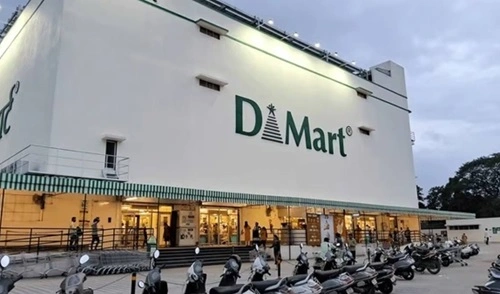D-Mart, officially known as Avenue Supermarts Ltd., is one of India’s most successful retail chains. Founded in 2002 by Radhakishan Damani, a veteran stock market investor, D-Mart has grown into a retail behemoth with over 300 stores across the country. Known for its affordability, efficiency, and customer-centric approach, D-Mart has redefined the retail landscape in India.
In this article, we explore D-Mart’s business model, its revenue streams, and the strategies that make it one of the most profitable and trusted retail brands in India.
Overview of D-Mart’s Business Model

D-Mart operates on a brick-and-mortar retail model with a strong focus on affordability and efficiency. Its core strategy revolves around providing customers with high-quality products at competitive prices while ensuring operational efficiency.
Key Features of D-Mart’s Business Model:
- Everyday Low-Cost Model (EDLC):
- D-Mart focuses on offering products at consistently low prices, making it a go-to destination for budget-conscious customers.
- High Inventory Turnover:
- By maintaining a fast-moving inventory, D-Mart reduces storage costs and ensures fresh stock across its stores.
- Cluster-Based Expansion:
- The company follows a cluster-based expansion strategy, opening multiple stores within a specific geography to maximize operational efficiency and brand presence.
- Own-and-Operate Model:
- Unlike many other retailers, D-Mart owns most of its stores instead of leasing them, reducing long-term costs and rent escalation risks.
How Does D-Mart Earn Money?
D-Mart generates revenue through multiple streams, primarily driven by its retail operations. Here’s a detailed look at how the company earns money:
a. Sale of Consumer Goods
- D-Mart earns the bulk of its revenue by selling a wide range of consumer goods, including:
- Food Products: Groceries, packaged foods, and fresh produce.
- Non-Food Essentials: Personal care, cleaning supplies, and household products.
- General Merchandise: Apparel, kitchenware, electronics, and home décor.
- Competitive pricing and frequent discounts attract a large volume of customers, ensuring high foot traffic and strong sales.
b. Bulk Purchasing
- D-Mart negotiates bulk purchases directly with manufacturers and suppliers, allowing it to secure products at discounted rates. This cost-saving is passed on to customers, driving loyalty and repeat purchases.
c. Private Labels
- D-Mart has its own private label brands in categories like groceries, personal care, and household products. These private labels offer higher profit margins and cater to the price-sensitive segment of customers.
d. High Inventory Turnover
- By selling products quickly, D-Mart minimizes holding costs and generates revenue more efficiently. The high inventory turnover ensures that its stores remain stocked with fresh products.
e. Real Estate Ownership
- D-Mart owns a majority of its retail stores, which provides long-term cost savings. By avoiding rental escalations, the company increases its profitability.
- In cases where D-Mart leases properties, it negotiates favorable terms to minimize expenses.
f. Seasonal and Festival Sales
- The company boosts revenue during peak shopping seasons and festivals by offering additional discounts and promotions, attracting more customers and driving higher sales volumes.
Why D-Mart’s Model Works
D-Mart’s business model thrives on operational efficiency, low costs, and a customer-first approach. Here’s why it works:
a. Everyday Low Pricing
- D-Mart’s EDLC strategy ensures that customers always perceive value for money. This builds trust and encourages repeat visits.
b. Operational Efficiency
- The company’s focus on owning stores, optimizing supply chains, and reducing overhead costs leads to higher profitability.
- D-Mart’s cluster-based expansion reduces logistics costs and improves operational control.
c. High Volume, Low Margin
- The company relies on high sales volumes and fast inventory turnover to offset its low profit margins, ensuring steady revenue growth.
d. Loyal Customer Base
- D-Mart caters primarily to middle- and lower-income households, offering products that meet their everyday needs at affordable prices. This loyalty drives consistent foot traffic.
e. Location Strategy
- D-Mart carefully selects store locations, targeting residential neighborhoods with high population density to maximize accessibility and sales.
Financial Performance
D-Mart’s financial success reflects the efficiency of its business model. Key financial highlights include:
Revenue Growth
- D-Mart has consistently reported strong revenue growth, with an annual turnover exceeding ₹30,000 crores in recent years.
Profit Margins
- While the company operates on thin profit margins (typically 4-6%), its high sales volumes and cost control measures ensure healthy net profits.
Market Capitalization
- D-Mart is among the most valuable retail companies in India, with a market capitalization exceeding ₹2 lakh crores, making it a favorite among investors.
Challenges and Opportunities
Challenges
- Competition:
- D-Mart faces stiff competition from other retail chains like Reliance Retail, Big Bazaar, and online platforms like Amazon and Flipkart.
- Limited E-Commerce Presence:
- The company’s online presence, D-Mart Ready, is still in its nascent stages compared to its brick-and-mortar operations.
- Dependency on India’s Economy:
- Any slowdown in consumer spending or changes in regulatory policies could impact D-Mart’s performance.
Opportunities
- E-Commerce Expansion:
- By investing in its online platform, D-Mart Ready, the company can capture a larger share of the growing e-commerce market.
- Geographic Expansion:
- Expanding into Tier 2 and Tier 3 cities presents significant growth potential as these markets embrace organized retail.
- Private Label Growth:
- Increasing the range and visibility of private-label products can improve margins and brand loyalty.
- Technology Integration:
- Adopting advanced supply chain technologies and data analytics can further enhance efficiency and customer experience.
Future Prospects
D-Mart is well-positioned to sustain its growth trajectory due to its strong business fundamentals and customer-centric approach. Key focus areas for the future include:
- Expanding its store network to underserved regions, particularly in smaller cities and towns.
- Scaling its e-commerce operations to compete with online giants.
- Strengthening its private-label offerings to improve profitability.
- Enhancing its supply chain to ensure faster inventory turnover and cost savings.
Conclusion
D-Mart’s business model is a masterclass in operational efficiency and customer-centric retailing. By focusing on affordability, quality, and efficiency, the company has built a loyal customer base and established itself as a leader in India’s retail sector. While challenges like competition and the growing importance of e-commerce persist, D-Mart’s strong fundamentals and strategic focus on expansion and innovation position it well for long-term success. As India’s organized retail market continues to grow, D-Mart is set to remain a dominant player in the years to come.

